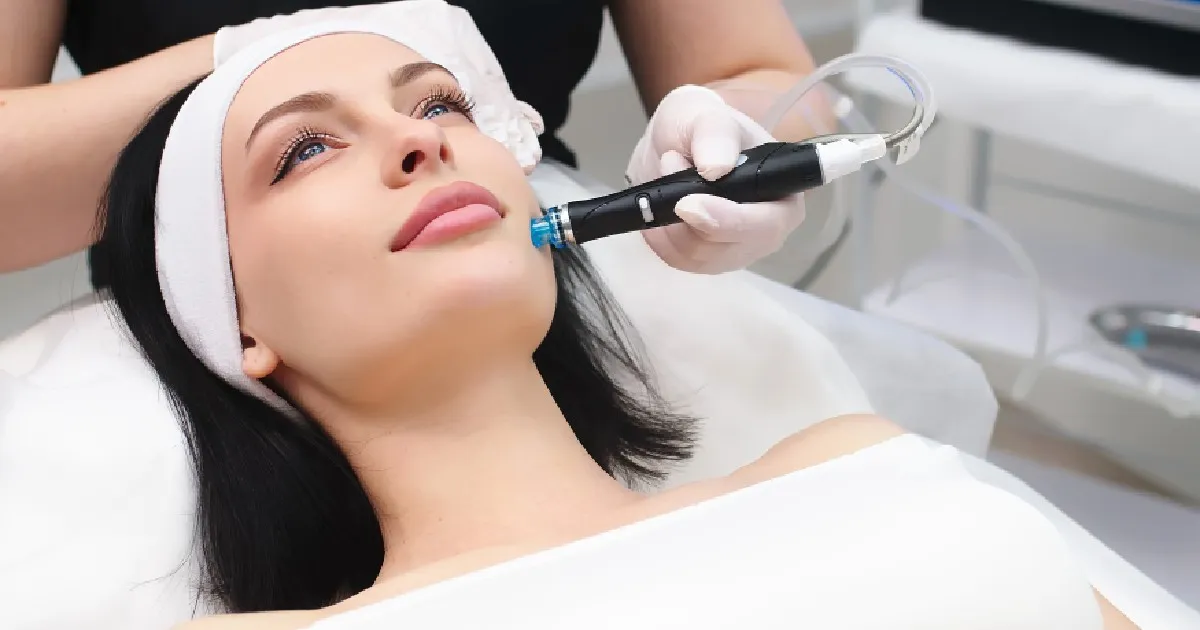What Is a Chemical Peel and How Can It Improve Your Skin?
If you’re looking for a way to refresh dull, uneven, or aging skin, Chemical peels offer a science-backed solution that delivers visible results. But what exactly is a chemical peel, and how does it work?
A chemical peel is a skin-resurfacing treatment that uses a specially formulated acid solution to gently exfoliate the outer layers of the skin. This process encourages cell turnover, revealing smoother, clearer, and more radiant skin underneath. Chemical peels can help improve common concerns like fine lines, acne scars, sun damage, hyperpigmentation, and uneven texture.
At Meridian Medical Spa in Bonita Springs, we offer customized chemical peels tailored to your skin type and concerns, whether you’re looking for a light refresh or a deeper rejuvenation. The result? Healthier, more youthful-looking skin with minimal downtime.
The Basics of Chemical Peels
A chemical peel enhances the look and feel of the skin on the hands, neck, and face. The skin is applied with a chemical solution, which exfoliates and finally peels off the skin. Although the procedure could seem difficult, have no fear the goal is to expose a bright and refreshed complexion.
Types of Chemical Peels
Not all chemical peels are produced equally, and the choice of peel depends on various factors, including the skin concerns you wish to address and your skin type. Here are the three main types of chemical peels:
- Superficial Peels: These are the mildest types of peels, targeting only the outer layer of the skin (epidermis). Typically, alpha-hydroxy acids (AHAs) or beta-hydroxy acids (BHAs) like glycolic acid or salicylic acid are used for superficial peels. They are suitable for treating fine lines, mild discoloration, and rough skin texture.
- Medium Peels: Going a bit deeper, medium peels penetrate the skin’s outer and middle layers. Trichloroacetic acid (TCA) is a common agent for medium peels. This type of peel addresses more pronounced skin issues such as age spots, wrinkles, and freckles.
- Deep Peels: Reserved for more severe skin concerns, deep peels reach the middle layer of the skin (dermis). Phenol, a potent chemical, is often used for deep peels. This peel can effectively treat deep wrinkles, scars, and sun damage but requires extended recovery time.
How Does It Work?
Now, let’s explore into the nitty-gritty of how chemical peels work their magic on our skin:
- Exfoliation Process: The primary goal of a chemical peels is to exfoliate the skin. The chemical solution applied during the treatment triggers the shedding of the outermost layer of the skin. This process, known as exfoliation, reveals the smoother, undamaged skin beneath.
- Stimulation of Collagen Production: Collagen is the structural protein responsible for the skin’s firmness and elasticity. Chemical peels stimulate the production of collagen, helping to improve skin texture and reduce the appearance of fine lines and wrinkles.
- Cell Turnover Acceleration: Chemical peels accelerate the natural process of cell turnover. By shedding the old, damaged skin cells, the treatment promotes the growth of new, healthier cells. This results in a more youthful and radiant complexion.
- Treatment of Specific Skin Issues: Different chemical peels target specific skin concerns. For instance, peels with salicylic acid are excellent for addressing acne and blemishes, while glycolic acid peels improve skin tone and texture.
Benefits of Chemical Peels
As we unravel the secrets behind chemical peels, it’s essential to highlight the myriad benefits that make this skincare treatment a favorite among those seeking skin rejuvenation:
- Improved Skin Texture: Chemical peels are renowned for smoothing rough skin texture, leaving a silky, soft feel behind.
- Diminished Fine Lines and Wrinkles: Inducing a more youthful appearance is achieved by stimulating the creation of collagen, which helps lessen fine lines and wrinkles.
- Evened Skin Tone: Whether dealing with sunspots, age spots, or uneven pigmentation, chemical peels can help even the skin tone for a more balanced complexion.
- Reduced Acne and Acne Scars: Chemical peels containing salicylic acid or TCA are effective in treating acne and diminishing the appearance of acne scars.
- Boosted Radiance: By promoting cell turnover and shedding dull, damaged skin, chemical peels unveil a radiant and luminous complexion.
Considerations and Cautions
While chemical peels offer impressive results, it’s crucial to approach them with careful consideration:
- Professional Expertise: Always seek the expertise of a qualified skincare professional or dermatologist for a chemical peel. They can assess your skin type and concerns, recommending the most suitable peel for optimal results.
- Sun Protection is Key: Post-peel skin will be more sensitive to sunlight. Sun protection is important to control sun damage and maintain the benefits of the treatment.
- Downtime: Depending on the depth of the peel, some downtime may be required for recovery. Be prepared for potential redness, peeling, and temporary skin sensitivity.
The Evolution of Chemical Peels
As we navigate the fascinating world of chemical peels, it’s intriguing to note how this skincare practice has evolved. What began as a relatively simple procedure has now transformed into a nuanced and sophisticated array of treatments tailored to focus on specific skin concerns.
Innovative Formulations: The formulations used in chemical peels have become increasingly sophisticated, incorporating a diverse range of acids and compounds. Carefully selecting these ingredients allows skin care professionals to customize treatments for each individual’s unique needs.
Combination Therapies: Modern skincare needs to settle for a more than one-size-fits-all approach. Many professionals now combine chemical peels with other advanced treatments, such as microdermabrasion or laser therapy, to enhance overall results. This approach allows for a comprehensive and targeted skincare regimen.
Homecare Integration: While professional chemical peels remain a staple, there’s a growing trend towards at-home peels that are milder yet effective. When used correctly, these products offer a way for individuals to extend the benefits of professional treatments and maintain their skin health between visits.
The Future of Skincare
As we stand at the intersection of science and beauty, it’s clear that the future of skincare holds exciting possibilities. From the ongoing refinement of chemical peel formulations to the integration of cutting-edge technologies, the quest for healthier, more radiant skin is an ever-evolving journey.
Advancements in Ingredient Technology: The skincare industry continues to witness breakthroughs in ingredient technology. These innovations, from peptides to stem cells, are finding their way into chemical peel formulations, promising even more targeted and impressive results.
Personalized Skincare Plans: With the increasing availability of genetic and skin analysis, the future holds the promise of truly personalized skincare plans. Professionals can tailor chemical peels and other treatments based on an individual’s genetic makeup, lifestyle, and environmental factors.
Focus on Holistic Wellness: Skincare is not just about treating the surface but about holistic wellness. The future of chemical peels may involve a deeper integration with overall health, considering factors such as diet, stress, and lifestyle choices to optimize skin outcomes.
Takeaway
At Meridian Medical Spa, everyone deserves to radiate confidence through healthy, glowing skin. Our Chemical Peel treatments are not just about transforming your appearance; they are an investment in your self-care journey. Book your Chemical Peel experience today, and let Meridian Medical Spa unveil the beautiful, confident you!






